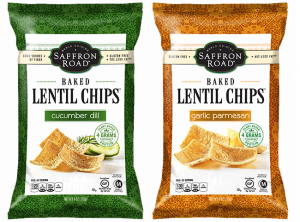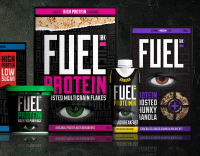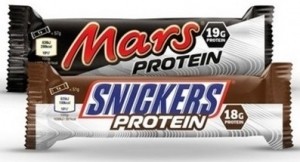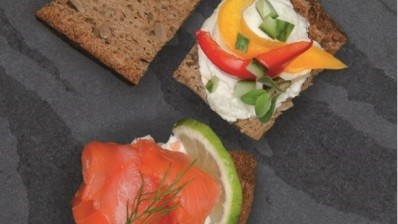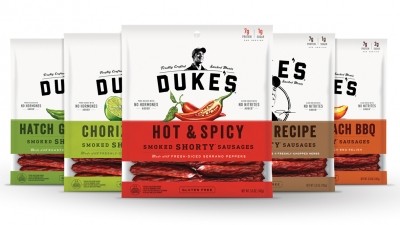Lessons to learn: Could protein snack shoppers be better informed?
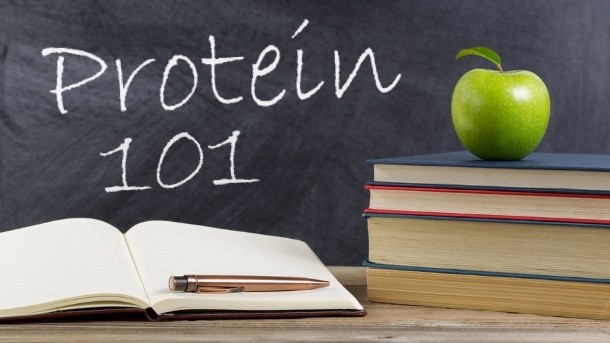
Not so long ago, consumers might chug a chalky fortified milkshake or fill a food blender with eggs if they wanted a protein fix. But these days, protein claims can be found on a vast and growing range of products including snack bars, drinks, chips, cookies and meat snacks.
The trend been particularly pronounced than the US where – according to Mintel - almost 2% of new food products launched in 2015 carried a ‘high protein’ claim, versus just under 1% in Europe and the Asia Pacific region.
And, increasingly, high-protein products are being rolled out under established brands, such as Weetabix and Snickers lines launched in the UK recently.
Selling at a premium
Which is good news for those consumers who have never developed a taste for raw egg, and also for those food manufacturers and retailers who can charge a premium for protein-packed products.
But, how many of the consumers embracing the protein trend truly understand why they are paying more for these products and what the benefits are? And if they don’t know why, is there a risk they will eventually stop doing so, and the protein boom become a protein bust?
Scientific research favorably linking protein consumption with increased satiety and weight management has driven this growth in high protein food and beverage products, says Judy Seybold, vice president of content services at US retail analysts Spins.
“It is not surprising the trend has evolved, as the consumer’s desire for health and wellness increases,” she adds. “I believe the mainstream demand for all types of high protein foods have been fueled not only by the demands of health enthusiasts but informed consumers who seek the nutritional benefits of protein as shown by the science.”
A white paper published by Mintel in 2014 revealed that around a third of consumers in the UK, US and China who were adding protein to their diet were doing so to help them build muscle.
Eating protein to lose weight
A larger proportion were eating more protein in order to maintain a healthy weight – the reason given by 51% of Chinese consumers, 47% of those in the UK and 46% in the US. Around 40% of UK and US consumers also said they were eating more protein in order to lose weight.
Perhaps ironically, given the growing range of higher-protein snacks on shop shelves, between a quarter and a third of consumers said they were eating protein to help them snack less.
Among the protein-dense snacks on offer are baked lentil chips from US-based Saffron Road, which says demand for protein can be traced back to the Atkins craze.
Paleo diet movement
“This proved that, while most consumers can’t keep all carbohydrates out of their diets, they can eat more protein,” says Saffron Road executive vice president Jack Acree, adding that this legacy lives on in the Paleo diet movement.
“We see more people dabbling in this area than necessarily fully adhering to such diets,” he says.
Bounce Foods, producer of high-protein Bounce Energy Balls, says its own research into consumer usage and attitudes revealed that, when it comes to understanding why people need protein there’s a sliding scale of knowledge.
“This ranges from the super-informed ‘improvers’ who use it in a functional way to the people just looking to snack a bit better but who are still confused about what protein does and how to integrate it into their daily lives with ease,” adds Bounce Europe CEO Mark Tanous.
It’s a view echoed by Barney Mauleverer, co-founder of Fuel10K, which sells high-protein products targeted at the breakfast market including porridge pots, Protibrick breakfast cereal biscuits and ‘liquid breakfast’ drinks.
Merchandising
In-store merchandising can also help to promote the use of protein products, and Fuel10k recently persuaded Walmart-owned UK supermarket chain Asda to merchandise all higher protein ready-to-eat cereals together .
“This has been a big step in helping consumers understand what is available to them,” says Fuel10K co-founder Barney Mauleverer. “We are encouraging other retailers to follow suit in block merchandising protein areas in breakfast – much like they already do with free-from or organic products.”
Bounce Foods would like to see merchandising used to promote how snacks that deliver protein can help keep consumers going throughout the day.
“In parts of the US you’ll see protein bars within mainstream confectionery fixtures – even in airports there’s a wide selection of high-protein snacks,” says Tanous. “With consumer interest increasing, it’s only a matter of time before this becomes normal in the UK too.”
‘Protein is a good thing’
“We are not sure many people really understand what protein is or does but most people have heard it’s a good thing – especially in the morning after an eight-hour snooze,” he told BakeryandSnacks.
So, why are those consumers who do not understand the benefits of high-protein food spending on such products?
Manufacturers say taste is one factor – with the improved quality of high-protein products making it easy for consumers to opt into the category.
“People are trading up from simple swaps – such as a chocolate bar for a cereal bar - and buying into nutrition, protein and better quality ingredients,” suggests Tanous. “This is a trend set to continue – snacks that sustain have appeal across a number of different consumer groups we identified in our research.”
Sugar reduction
The war on sugar is also aiding the category, feels Mauleverer.
“The high-profile media focus on reducing excessive sugar is pushing younger consumers to be more discerning when looking for fast and nutritious meal-time solutions,” he suggests. “One thing they are looking for, more and more, is protein with fewer calories, less sugar and less fat.”
If this is the case, it makes the recent launch of branded protein bars under confectionery brands an interesting one.
Rolled out in the UK in May with a recommended price of £2.19 ($3.16), the Snickers Protein bar offers 18g of protein and Mars Protein bar 19g.
“In a world that is anti-confectionary, I see the move into protein chocolate bars as a bit of a land shift,” says Mauleverer. “They seem to be using the protein claim to make their products ‘more healthy’. For a company like Mars, it is a major deviation away from what the brand stands for. It will be interesting to see how they progress.”
Brands tap protein boom
Saffron Road’s Arcee suggests consumers will be wary of some established brands that try to tap the protein boom.
“They understand the nutritional difference between food that is naturally rich in protein versus those that had added protein,” he says. “Consumers are much smarter about labels and will react accordingly.”
But not all manufacturers have such confidence in consumers, and feel the category could benefit from consumers having a better understanding of protein.
“I think education is required and it would benefit the consumers to be able to make more educated purchases,” says Vhari Russell, founder of UK-based food & drink marketing agency The Food Marketing Expert.
Clear message needed
“The message needs to be clear and state what the benefits of high-protein products are and which groups of consumers would benefit from having them,” she adds. “Not every product is right for every consumer, but there are more consumers seeing food as not just fuel but as medicine, and maybe this is the route to educate consumers.”
Mauleverer feels it would be helpful for further scientific studies to be accredited so that on-pack protein messages can become clearer, and broader health claims used to educate the consumer further.
He says his own business already talks to younger consumers who have stopped eating breakfast and want something convenient and nutritious.
“Younger consumers are growing to understand that protein helps them get through a busy day,” he adds. “We need messages that support those who are trying to get more protein into their diets with good nutritionals that keep them fuller for longer.”

